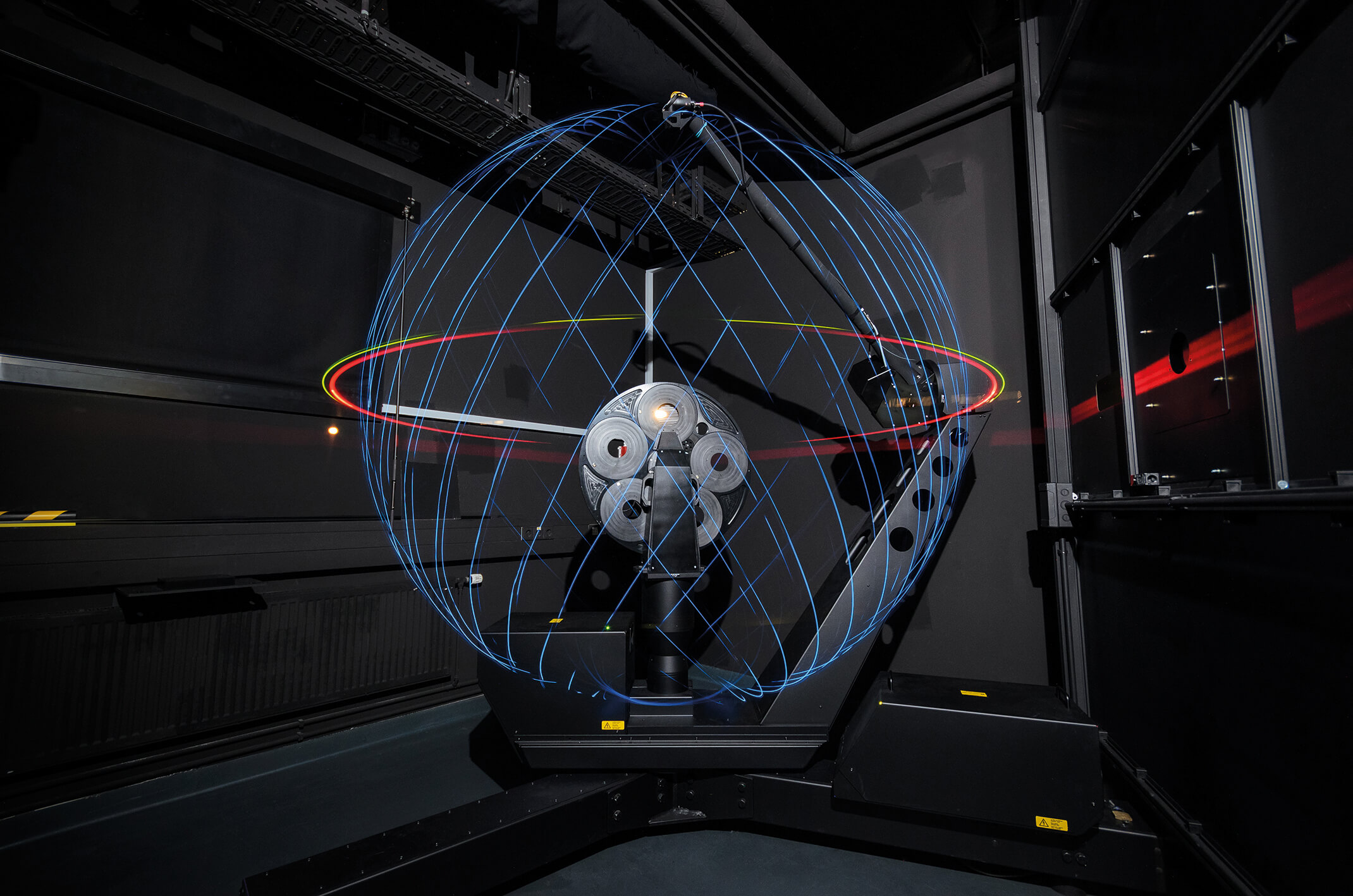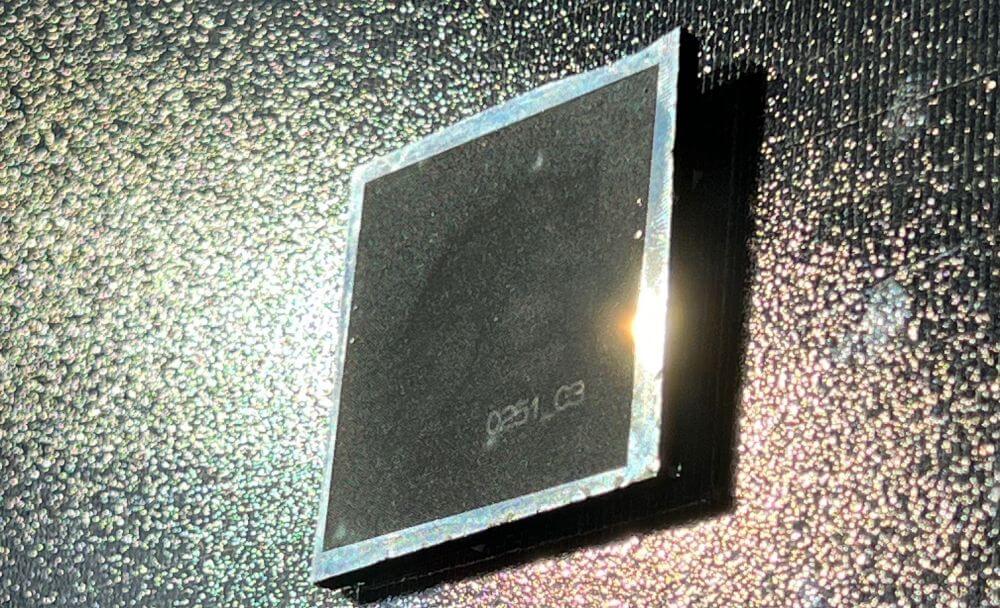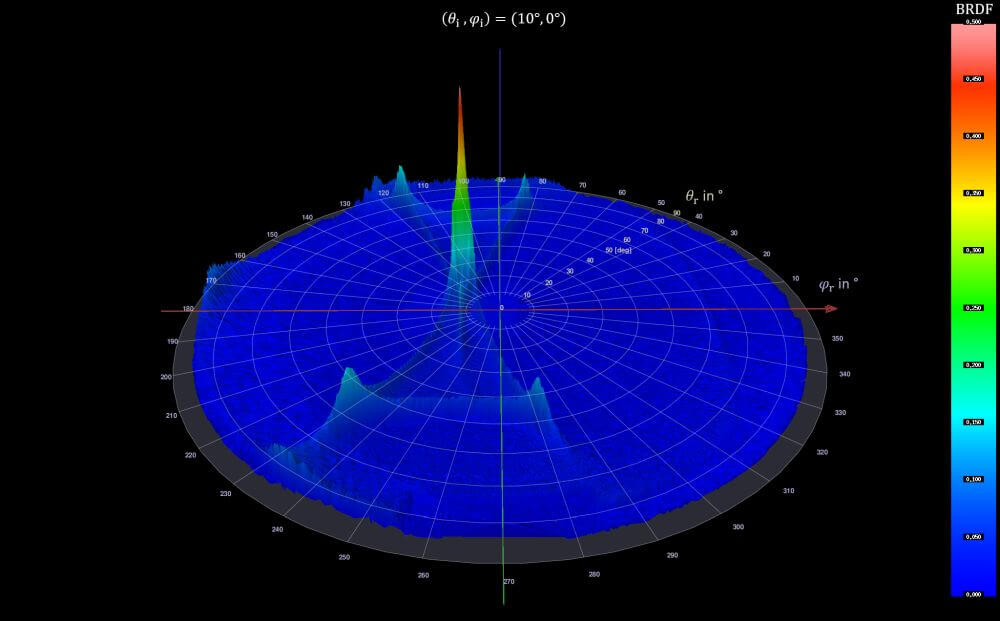
These measurements are used in a variety of applications:
- Architecture and construction: Evaluating the light transmittance and reflectance of window glass and façade materials, for example, to optimize energy efficiency, building functionality and visual comfort, through material selection.
- Photovoltaics: Optimizing the efficiency of solar cells and evaluating photovoltaic modules regarding their glare potential.
- Automotive industry: Analysis of light reflectance and transmittance of paints and coatings to improve vehicle aesthetics and safety.
- Computer graphics: Creation of realistic renderings by accurately simulating the interaction of light with various surfaces and materials.
- Materials science: Characterization of new materials to evaluate their optical properties, e.g. during product development and improvement.


